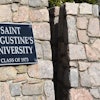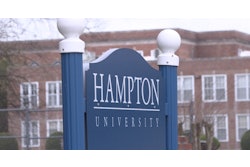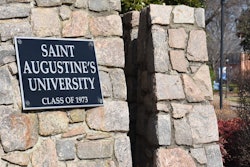“You’ve got to know the shape of the river perfectly. It is all
there is left to steer by on a very dark night.” So begins Derek Bok
and Dr. William Bowen’s new book, The Shape of the River, one of the
first books to demonstrate the power of race-sensitive admissions
practices. The former presidents of Harvard and Princeton universities
evoke the image of Mississippi riverboat pilots winding through fogs,
slow eddies, and hidden bluffs.
Perhaps that is what 1998 felt like to those who fought to provide
access to Blacks in higher education only to watch in dismay as 30
years of progress was dismantled by successful legal — and voter —
challenges to affirmative action. Those challenges began, of course,
two years ago with California’s Proposition 209, which slowed the
number of Blacks and Latinos admitted to the elite University of
California campuses to a trickle.
This year, the movement gathered momentum as the battleground
shifted to Washington State. Although affirmative action supporters
appeared more organized and were better financed than their peers in
California had been, opponents again won a decisive victory when voters
passed Initiative 200.
Brusied and battered, supporters of affirmative action were again
surprised when the struggle that has long been waged on university and
graduate school turf shifted to the virgin terrain of public school
districts. Students and
parents in Boston and Virginia — among other places — filed
lawsuits saying they were unfairly denied admission to well-respected
schools. In Boston late last month, a three-judge panel struck down the
affirmative action policy at Boston Latin School, the city’s most
prestigious high school.
By the end of the year it was clear to many that the landscape had
changed and that new strategies are needed to continue to ensure
minority students access to the nation’s colleges and universities.
“Those of us who are proponents [of affirmative action] have to
clarify the terms of the debate and try to make it clear that it is not
a question of preferences or of righting wrongs that happened in the
mid-1800s,” says Margaret Montoya, a professor of law at the University
of New Mexico’s School of Law.
Many veteran leaders in the fight for access opted either for
retirement or a career change this year. Dr. Donald Stewart announced
he will step down from the helm of the College Board next year and Dr.
Reginald Wilson left his prestigious senior scholar position at the
American Council on Education.
Yet observers say some of the new players who are emerging may
prove ideal for these pragmatic times — people like Drs. Belle
Wheelan, the first African American woman to head Northern Virginia
Community College, and Lee Pelton, the first Black president of
Willamette University in Oregon.
However, faculty appointments like that of Dr. Steven L. Mayo —
the first Black tenured professor at the California Institute of
Technology whose scholarly career is so clearly distanced from matters
of race — beg the question of whether scholars who do align themselves
with racial issues will become further marginalized from the academy’s
most coveted positions. Certainly, many argued that this year’s Justice
Department probe of Dr. Luther Williams was a not-so-subtle attempt to
get rid of him. Williams has successfully used NSF programs to create
more opportunities for African Americans. But Ward Connerly, the Black
California businessman, who was once the beneficiary of affirmative
action programs, has become the father of the movement to roll back
those efforts.
As 1999 approaches, perhaps these new leaders will be like the
Mississippi riverboat pilots Bok and Bowen wrote about so eloquently in
their book. The pilots of the educational process who had to “know
every depth, every deceptive shoal, and every hidden snag of the river”
to continue the fight to ensure access to education for all.
The following is a recap of the higher education highlights of 1998:
Politics and Personalities
* President Clinton’s national advisory board on race concluded its
work in 1998 with little of the fanfare that accompanied the group’s
creation in 1997. The seven-member panel held meetings nationwide, but
most experts believed the panel did not help build a stronger national
consensus for affirmative action in higher education and other
settings. The board could not be effective, many said, because
President Clinton and the media were sidetracked by the Monica Lewinsky
scandal, and members had to defend themselves against charges that they
ignored opposing voices. (April 30, 1998)
* Congress passed a massive bill to extend the life of the Higher
Education Act. The act includes provisions to lower student loan
interest rates and increase the maximum allowable Pell Grant. The hill
also included major changes in funding for institutions that primarily
serve students of color. (May 28, 1998)
* Middle- and high-school students may get a leg up on a college
education thanks to a new program that will provide information and
mentoring services to low-income students. Congress included $120
million for the GEAR-UP program, which was introduced by Rep. Chaka
Fattah (D-Pa.), who noted that although the federal government offers a
wealth of college financial aid, many low-income students never know
about it. (Nov. 26, 1998)
* Under a new remedial policy approved in May, students who fail
one or more of the university’s placement exams in reading, writing,
and math will no longer be allowed to enroll at The City University of
New York’s senior colleges. Critics of the plan filed a lawsuit to keep
CUNY officials from dropping remedial classes from the curriculum.
(Sept. 3, 1998)
* Despite the efforts of opponents, Washington state voters passed
the anti-affirmative action Initiative 200, which would prohibit the
government from considering race, sex, color, or national origin in
college admissions and state contracting decisions. Initiative 200
marked the second big victory for foes of affirmative action since
California passed Proposition 209 in 1996. (Nov. 26, 1998)
* The U.S. Court of Appeals Court ruled that Boston Latin School,
an elite Boston public high school, violated the rights of a White
applicant by using admissions criteria that rejected her by while
admitting some minority students with lower test scores and grades.
Affirmative action supporters fear the ruling could undermine legal
defenses that many universities make to use racial preferences to admit
students. (Dec. 10, 1998)
* A group of attorneys, civil rights leaders, and law students
demonstrated outside the U.S. Supreme Court to protest the lack of
minority law clerks working for the justices who preside over the
highest court in the land. Of the 34 Supreme Court law clerks hired for
the coming term, there is only one minority–a Latino. (Oct. 15, 1998)
* Central State University, Ohio’s only public historically Black
university, has taken several giant steps on the road to renewal,
including having its accreditation renewed and the lifting of a
burdensome U.S. Department of Education penalty. Central State
officials also regained financial control of the university from state
budget officials who had stepped in a year earlier when the university
fell into a financial crisis. (Sept. 3, 1998)
* Dr. Donald Stewart, the first African American president of the
College Board, announced that he will resign from his post next fall
and spend a year as a visiting scholar at Harvard University’s John F.
Kennedy School of Government. (Oct. 15, 1988)
* Dr. Reginald Wilson, who has been known as higher education’s
voice for minority affairs, left the American Council on Education, for
a one-year visiting professorship at the University of Texas-Austin.
Wilson, who once headed ACE’s Office of Minority Concerns and created
its influential Annual Status Report on Minorities in Higher Education,
also served as a leader in the effort to sensitize ACE and the broader
higher education community to diversity issues. (March 5, 1998)
* Former Virginia Gov. L. Douglas Wilder accepted, then rejected,
the presidency of Virginia Union University. His decision to step down
followed a controversy that ensued when he requested the resignation of
11 of the school’s top administrators. Wilder, the nation’s first
African American governor, had accepted the post in June and would have
taken over in August. Meanwhile, a replacement has yet to be named.
(Aug. 8, 1998)
* Dr. Luther S. Williams, assistant director for education and
human resources at the National Science Foundation, settled a lawsuit
against him charging that he had accepted honoria for speeches that
were a part of his official duties. Williams, the key architect of NSF
programs aimed at creating more opportunities for African Americans in
the fields of science and technology, agreed to pay $24,000 and will
remain in his job. (Aug. 6, 1998)
* Dr. Belle Wheelan, was appointed president of Northern Virginia
Community College, one of the largest community college systems in the
country. In her previous job, as president of Central Virginia
Community College, she became the first African American woman to head
an institution of higher education in that state. (May 28, 1998)
* After nearly 12 years at the helm of Lincoln University, Dr.
Niara Sudarkasa resigned this September under a cloud of controversy.
Her resignation followed a critical report from the state Auditor
General’s Office that blamed her and other top Lincoln officials for a
pattern of mismanagement and financial irregularities, charges which
she denied. (Oct, 1, 1998)
* Dr. Marie V. McDemmond of Norfolk State University, also came
under fire in 1998. Soon after she became president, critics charged
that she spent $200,000 on renovations to her residence while the
university had a $4 million defecit. But McDemmond said the problems
began before she arrived. (Sept. 3, 1998)
* Dr. Edward B. Fort, out-going chancellor of North Carolina
AT&T State University, has been named chairman of the National
Association for Equal Opportunity in Higher Education (NAFEO). Fort
also announced that this would be his last year at A&T, ending his
17-year term as that institution’s president. (Aug. 6, 1998)
* Dr. Stephen Leon Mayo became the first African American to win
tenure at the California Institute of Technology, one of the most elite
technical universities in the world. Mayo, who was first appointed
assistant professor of biology at the institute in 1992, works in the
relatively new field of structural biology. (Oct. 15, 1998)
* Dr. James Hill became the first African American vice president
appointed at the University of Texas during its 115-year history.
Hill’s appointment comes at a time when minority enrollment is
declining at the university after a court-ordered ban on the use of
race-sensitive admissions. (Oct. 15, 1998)
Technology
* FCC commissioners voted to scale back the “e-rate”–the special
discounts designed to connect primary and secondary schools and public
libraries to the information highway–after major corporations lobbied
successfully for relied from some of the law’s requirements. Though
authorized to allocate up to $2.25 billion in annual discounts, the
commission decided to make $1.92 billion available for the 98-99 fiscal
year. In the first and second wave of e-rate allocations, a total of
$148 million in commitments were made to schools and libraries around
the country. (Aug. 20, 1988)
* Two education information and CAUSE merged to form a new
technology organizations, EDUCOM organization, which will target
underserved institutions, including colleges that serve a large number
of minority students. (Nov. 12, 1998)
* Microsoft and a team of scholars working under Harvard University
professors Henry Louis Gates Jr. and K. Anthony Appiah introduced
Microsoft Encarta Africana, a CD-ROM of the history, geography, and
culture of Africa and people of African descent. (Sept. 3, 1998)
Financial Matters
* Syndicated disc jockey/comedian Tom Joyner raised $150,000 for
Black colleges through the Tom Joyner UNCF Black College Fund. Joyner,
a Tuskegee University graduate, chooses a different college every month
to receive the funds raised by the foundation. “I’ve enjoyed a lot of
success in my life, and this is just one way to help others,” Joyner
told Black Issues. (Oct. 29, 1998)
* The College Fund/UNCF officials and members of 100 Black Men
Atlanta got into a war of words over whether the men’s support group
could solicit funds on behalf of UNCF member institutions, including
Dillard University. In the end, UNCF won, with Chairman Bill Gray
asserting that member institutions could do whatever they wanted, but
those violating their agreement with the College Fund would do so at
the risk of their UNCF membership. (Oct. 1, 1998)
* The Lily Endowment Inc. awarded a $42 million, three-year grant
to The College Fund/UNCF to help Black colleges build more
laboratories, provide more scholarships, and endow more chairs. The
gift is the largest ever given to a single entity by the foundation in
its 61-year history.
* Hampton University launched its $200 million capital campaign,
the largest ever mounted by an historically Black college, and
announced that it had already received $110 million in commitments.
Hampton’s goal is to break an HBCU record of $114 million raised in
1996 by Spelman College. (Nov. 12, 1998)
* Central State University, Ohio’s only public historically Black
university, has taken several giant steps on the road to recovery,
including having its accreditation renewed and the lifting of a
burdensome U.S. Department of Education penalty. Central State
officials also regained financial control of the university from state
budget officials (Sept. 3, 1998)
* Johnson C. Smith University raised $63 million during its
five-year capital campaign, the second largest campaign completed by
any HBCU in the nation. (Oct. 29, 1998)
Books
Among the many publications released this year to contribute to the
debate on minority access to higher education, four stand out:
* The Shape of the River: Long Term Consequences of Considering
Race in College and University Admissions, is the latest salvo in the
debate over affirmative action. Written by two former university
presidents, it documents that racial preferences at top colleges and
universities have helped African-Americans get ahead. Authors Derek
Bok, former president of Harvard University, and Dr. William G. Bowen,
former president of Princeton University, tracked the progress of
students at 28 selective colleges and found that affirmative action
policies worked. (Oct. 1, 1998)
* America in Black and White: One Nation, Indivisible, written by
Harvard history professor Stephan Thernstrom and his wife, Abigail, a
senior fellow at the conservative Manhattan Institute, concludes that
race-conscious affirmative actions policies are a failure. “The serious
inequality that remains is less a function of white racism than of the
racial gap in level of educational attainment, the structure of the
black family, and the rise in black crime,” the couple writes. (Jan. 8,
1998)
* In September, The Southern Education Foundation released its
much-anticipated report Miles To Go, The study, which examined higher
education state-by-state, concluded that despite more than two decades
of hard-fought desegregation efforts, African American students in the
south have enjoyed only meager gains in access to public four-year
institutions. (Sept. 17, 1998)
* Following in the path of U.S. News & World Report’s annual
college ranking, the editors and publisher of Black Enterprise and a
professor from Johns Hopkins University unveiled their ranking of the
top 50 colleges for African American students. Spelman and Morehouse
topped the list, with Stanford University being the only traditionally
White institution to make the top 10. (Dec. 24, 1998)
Students
* While the number of White students receiving college degrees has
stayed steady for the past five years, the number of African-American,
Hispanic, Asian, and Native American degree recipients has soared,
according to the Black Issues Top 100 Degree Producers. The number of
African-Americans receiving bachelor’s degrees is increasing at a rate
of 5.6 percent a year. (July 9, 1998)
* While the aggregate number of minority students attending Texas
colleges did not change dramatically in the year following Hopwood,
many fewer were admitted by the state’s most elite institutions. (May
14, 1998)
* The first undergraduate class admitted to the University of
California-Berkeley after the state passed Prop. 209 had 1,079 fewer
minority students for its fall class, with the most substantial decline
occurring among African-American students. Berkeley turned away 800
minority students who had SAT scores of 1200 or more and GPAs of 4.0.
Though not as extreme, similar decreases in minority admissions were
found at U.C.-Los Angeles. (April 16, 1998)
COPYRIGHT 1998 Cox, Matthews & Associates
© Copyright 2005 by DiverseEducation.com















